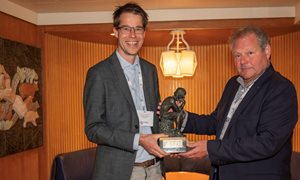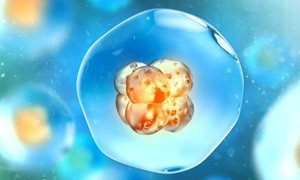24 February 2020
The consortium combines experts from biophysics, microfluidics and in silico modeling for multiscale molecular and mechanical intragration of invasion and metastasis.
In the NWO Open Competition Domain Science - GROOT researchers can apply as a part of a consortium for curiosity-driven, fundamental research in the research fields of the NWO Domain Science.
About the project: Active matter of cancer metastasis
During the early stages of metastasis, clusters of tumor cells combat a series of hurdles to dissociate from the primary tumor, navigate complex surrounding tissues, and enter the circulation in order to reach distant organs. In this program, they map this journey by integrating theoretical models with experimental cell biology, biophysics, and tumor biology. They aim to identify the physical/mechanical parameters that regulate collective behavior of tumor cells during these first steps of the metastatic cascade, and deliver insights for rational design of new therapeutic intervention strategies.

The consortium combines experts from biophysics, microfluidics and in silico modeling for multiscale molecular and mechanical intragration of invasion and metastasis.
In the NWO Open Competition Domain Science - GROOT researchers can apply as a part of a consortium for curiosity-driven, fundamental research in the research fields of the NWO Domain Science.
About the project: Active matter of cancer metastasis
During the early stages of metastasis, clusters of tumor cells combat a series of hurdles to dissociate from the primary tumor, navigate complex surrounding tissues, and enter the circulation in order to reach distant organs. In this program, they map this journey by integrating theoretical models with experimental cell biology, biophysics, and tumor biology. They aim to identify the physical/mechanical parameters that regulate collective behavior of tumor cells during these first steps of the metastatic cascade, and deliver insights for rational design of new therapeutic intervention strategies.
Related news items

Dutch Society of Clinical Chemistry Science & Innovation Award for the team of Hans Jacobs
14 June 2022 The team of Hans Jacobs pioneers on the development of personalized diagnostics to measure minimal residual disease in patients with multiple myeloma. read more
Michiel Vermeulen and Klaas Mulder receive funding from ZonMw for a collaborative project using stem cell-based models
15 July 2021Michiel Vermeulen and Klaas Mulder, theme Cancer development and immune defense, receive funding from ZonMw for a collaborative project to develop a stem cell based model to study early human embryogenesis.
read more
ZonMw Open Competition Grant for Annemiek van Spriel and Piet Gros
15 June 2021 Annemiek van Spriel, theme cancer development and immune defense, together with Piet Gros, Dept. of Chemistry, Utrecht University obtained a ZonMw Open Competition Grant to investigate IL-6 receptor structure and signalling in tumor cells. read more
HFSP Grant for Johannes Textor
30 March 2020 Johannes Textor, theme Cancer development and immune defense, has been awarded a program grant of 1 million US dollars by The Human Frontier Science Program (HFSP) to investigate how T cells navigate extremely dense environments using experiments, modeling and methods from pedestrian dynamics. read more
Three VIDI grants for RIMLS researchers
24 May 2019 Matthijs Jore, Daniele Tauriello and Johannes Textor are each to receive up to 800,000 euros to develop an innovative research theme and to build up their own research group. NWO is awarding the Vidi grant as part of the Innovational Research Incentives Scheme. read more
